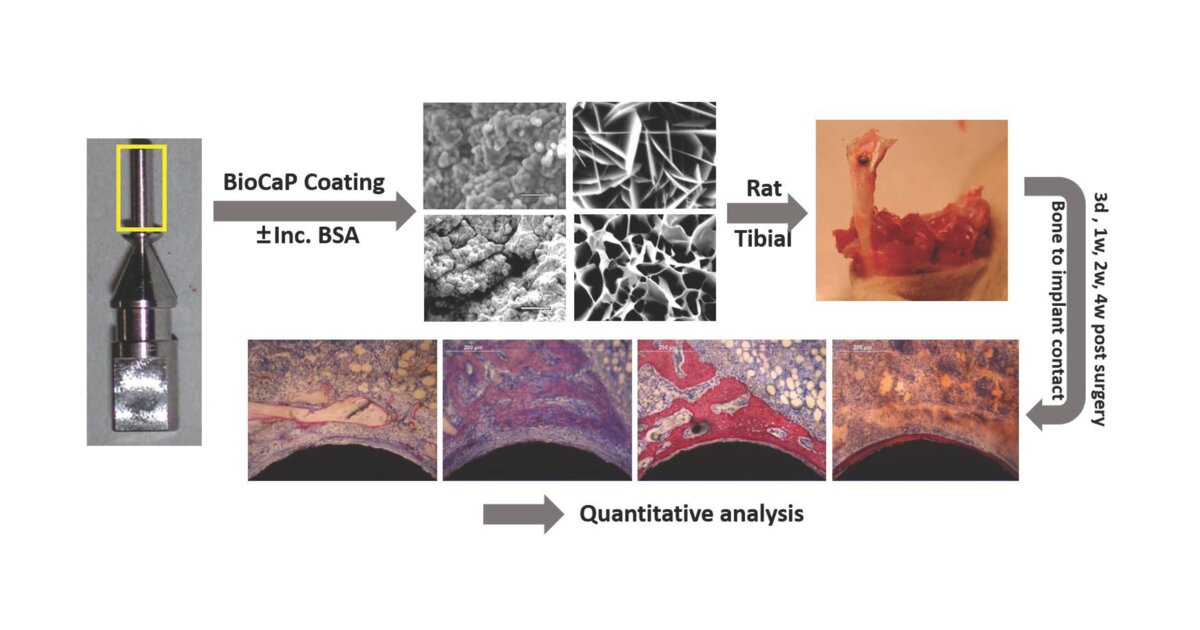Latest Trends in Coatings of Medical Implants
A special issue of Coatings (ISSN 2079-6412). This special issue belongs to the section "Surface Coatings for Biomedicine and Bioengineering".
Deadline for manuscript submissions: closed (20 September 2025) | Viewed by 2314

Special Issue Editor
Interests: bone tissue engineering; biomaterials; drug delivery; osteoinduction; dental implant; bone repair
Special Issues, Collections and Topics in MDPI journals
Special Issue Information
Dear Colleagues,
The advent of biomimetic coatings in the field of bone regeneration and repair has commanded considerable attention due to their intrinsic biocompatibility and osteoconductivity. By imbuing these coatings with osteoinductive properties through the incorporation of agents such as bone morphogenetic protein 2 (BMP-2) within the crystalline lattice under physiological conditions, they can elicit a robust response conducive to bone growth. When in contact with multinucleated cells, including osteoclasts and foreign body giant cells, the biomimetic calcium phosphate coating orchestrates a precisely modulated, gradual release of growth factors. This process occurs via cell-mediated coating degradation, mirroring a physiologically orchestrated release mechanism.
The primary objective of this Special Issue is to delineate the forefront of research and development in the field of biomimetic coatings for biomaterials. Discussions will delve into intricate topics, encompassing coating methodologies, physicochemical attributes and their potential role as carriers for therapeutic agents, as well as insights from preclinical investigations and clinical applications in the fields of implant dentistry and orthopedics. It is envisioned that these biomimetic coatings will reshape paradigms in drug delivery mechanisms and advance tissue engineering.
Yours sincerely,
Dr. Yuelian Liu
Guest Editor
Manuscript Submission Information
Manuscripts should be submitted online at www.mdpi.com by registering and logging in to this website. Once you are registered, click here to go to the submission form. Manuscripts can be submitted until the deadline. All submissions that pass pre-check are peer-reviewed. Accepted papers will be published continuously in the journal (as soon as accepted) and will be listed together on the special issue website. Research articles, review articles as well as short communications are invited. For planned papers, a title and short abstract (about 250 words) can be sent to the Editorial Office for assessment.
Submitted manuscripts should not have been published previously, nor be under consideration for publication elsewhere (except conference proceedings papers). All manuscripts are thoroughly refereed through a single-blind peer-review process. A guide for authors and other relevant information for submission of manuscripts is available on the Instructions for Authors page. Coatings is an international peer-reviewed open access monthly journal published by MDPI.
Please visit the Instructions for Authors page before submitting a manuscript. The Article Processing Charge (APC) for publication in this open access journal is 2600 CHF (Swiss Francs). Submitted papers should be well formatted and use good English. Authors may use MDPI's English editing service prior to publication or during author revisions.
Keywords
- bone tissue engineering
- biomaterials
- drug delivery
- osteoinduction
- dental implant
- bone repair
Benefits of Publishing in a Special Issue
- Ease of navigation: Grouping papers by topic helps scholars navigate broad scope journals more efficiently.
- Greater discoverability: Special Issues support the reach and impact of scientific research. Articles in Special Issues are more discoverable and cited more frequently.
- Expansion of research network: Special Issues facilitate connections among authors, fostering scientific collaborations.
- External promotion: Articles in Special Issues are often promoted through the journal's social media, increasing their visibility.
- Reprint: MDPI Books provides the opportunity to republish successful Special Issues in book format, both online and in print.
Further information on MDPI's Special Issue policies can be found here.





